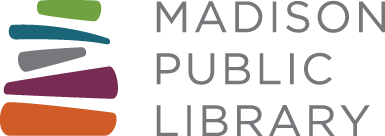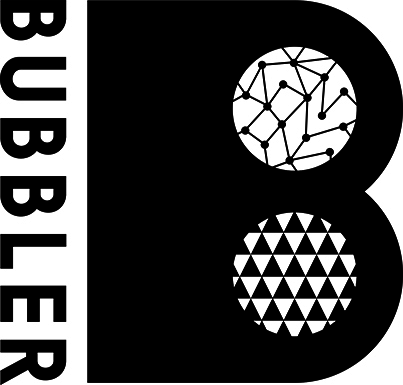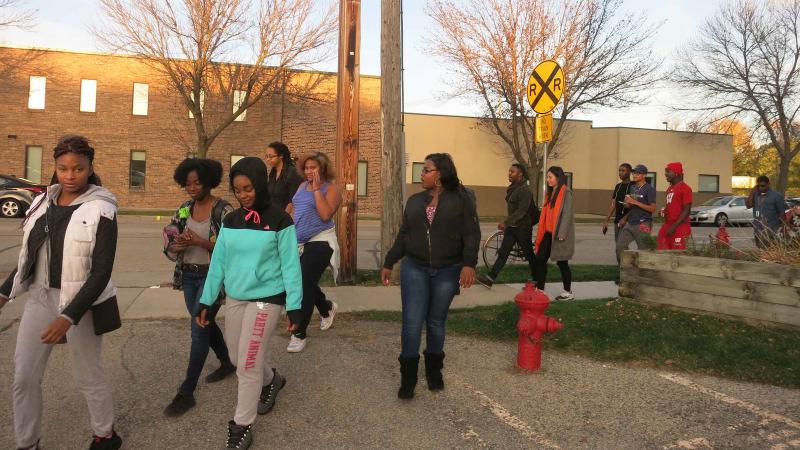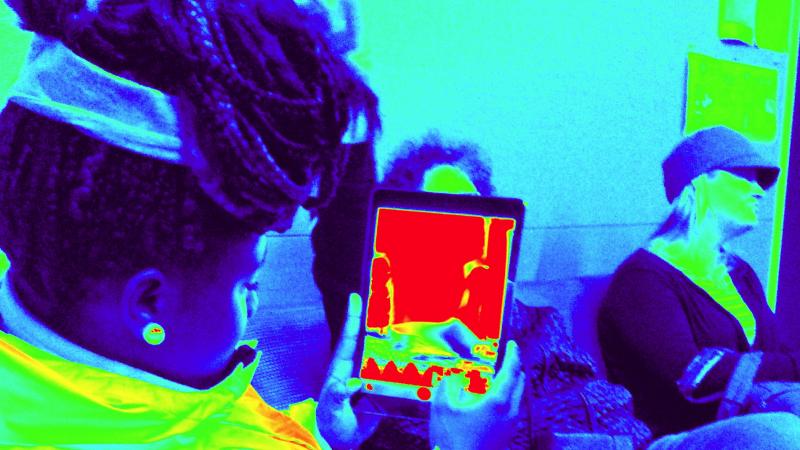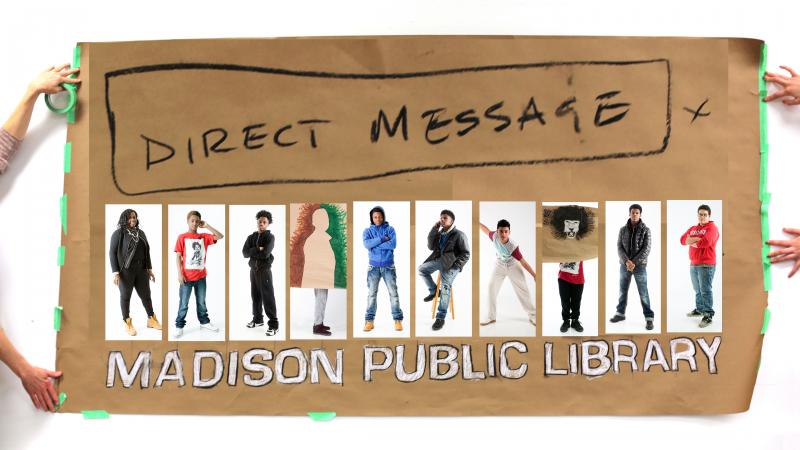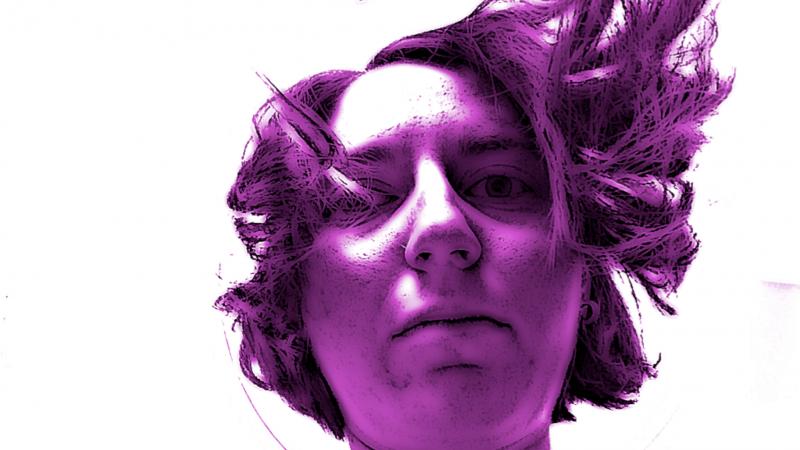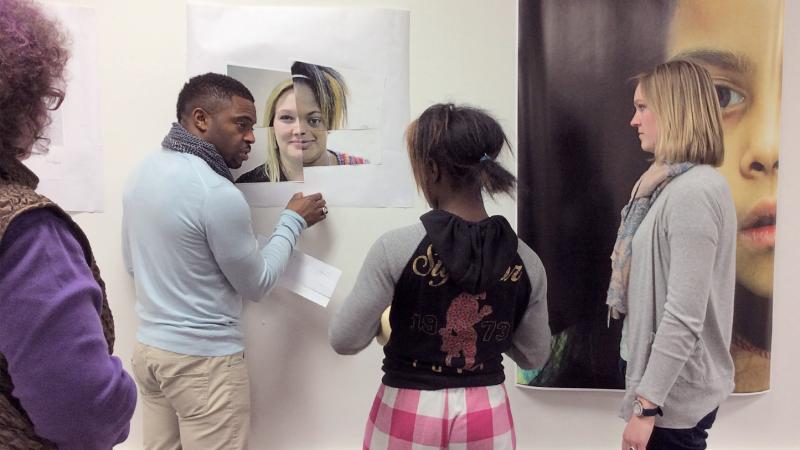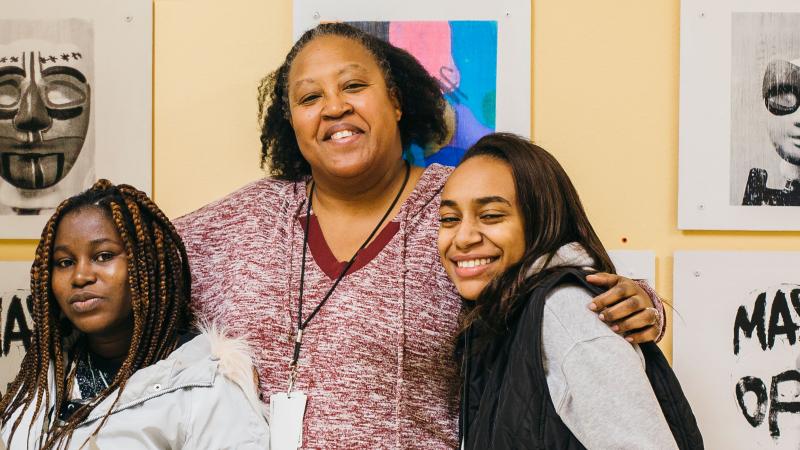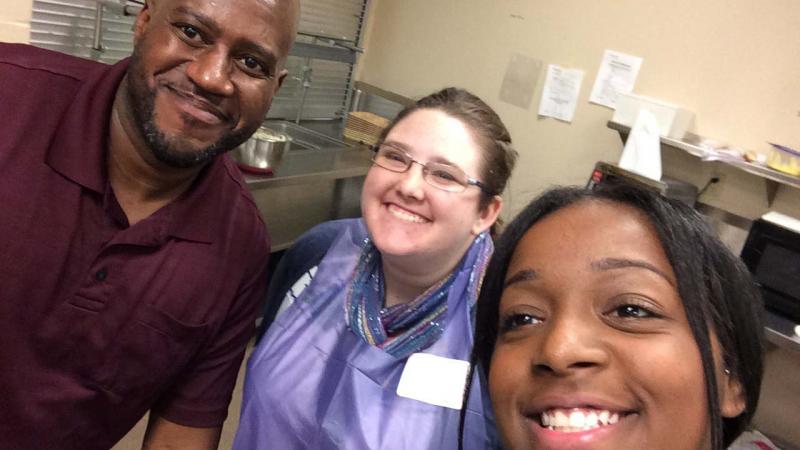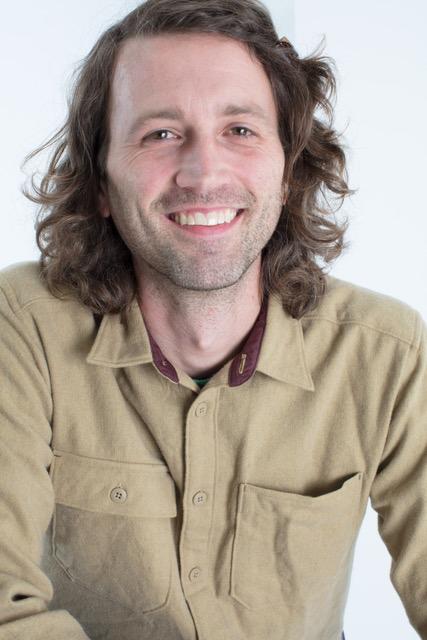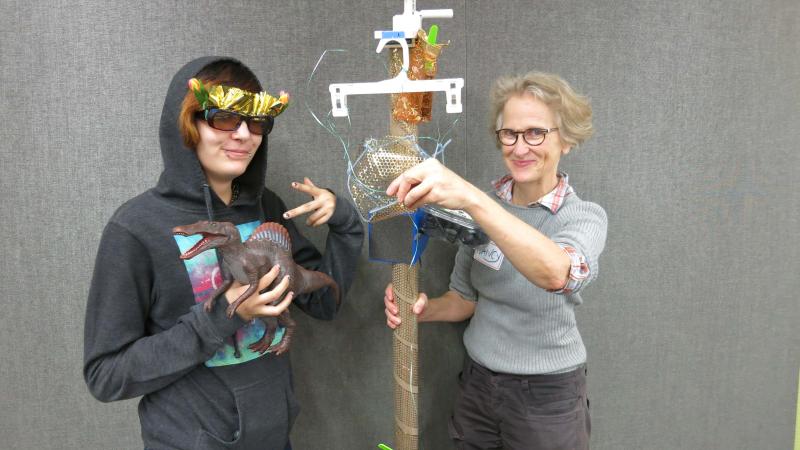Who We Are
Making Justice is a diverse collective of artists, activists, educators and students addressing learning gaps that disproportionately impact minority youth in Dane County, Wisconsin.
People are at the heart of Making Justice, which fosters community-building to remedy racial inequities. Although our primary focus is underserved youth, all Making Justice participants—teens, peer learners, facilitators, and staff—benefit from the opportunity to connect with diverse community members. Part of this learning process has been recognizing how we contribute to Dane County inequities. Our participants represent a wealth of resources that support program and community building.
Who we are interweaves our voices as part of an ongoing dialog that sustains relationship building within and beyond Making Justice. Check out our Authors page to learn more about the contributors to this curated community article.
Demographics
Case Study: Making Justice uniquely incorporates diverse community members to engage underserved youth in a makerspace program. Over 50 community and campus partners--a majority representing communities of color--have helped develop, facilitate and evaluate Making Justice programs. Teen participants are overwhelmingly from low-income communities of color.
Sessions function as communities of practice engaged in a shared project and collective learning. All present are expected to participate, which typically includes 4-10 teens; undergraduate or graduate peer learners; a community facilitator; and staff from partnering organizations…A facilitator’s ability to engage participants is more important than project design, and facilitators of color unquestionably have a greater impact on teen participants.
Rob: And if we’re talking about this program going forward, we still need to press for more identifiability, if that is a word. People that the kids identify with. We need more black people. More Latino people. Purple people too. And there’s no disrespect to everybody else.
Grant report: Making Justice would particularly benefit from the inclusion of program coordinators from communities of color at the highest level of administration.
Teens
Nancy: Jesse and I struggle when attempting to define the teens who participate in Making Justice. How would you describe them?
Jesse: Sometimes we use the word “at-risk” for the teens, but it’s loaded. All teenagers are at risk, that’s the definition of a teenager. Because that's when you take chances, and we all did.
John: It’s really kids who had some issues or struggles and haven’t had the opportunity to figure out a method to express themselves.
Andre: I would probably say a group of kids that have struggled in the past, who usually come from backgrounds and situations, that are facing more challenges than other kids, and may be involved with us because of some decisions or choices. And they’ve had the opportunity to examine who they are, and to engage with the community to tell their story.
And we generally hide this background. I understand why, and it's not just with Making Justice, we've done this for years. And more and more I think we need to bring it out, so on balance we're highlighting the skills, the good that's taking place with the kids we're working with.
Alan: I think they're all just Madison youth.
Andre: I think they are, but I don't want to diminish them. If the larger community sees that they're just Madison youth, that's great on one respect. But in another respect, they're kids that have had some struggles, and moved forward. There's an opportunity, through their own voice, and how we put this out there, to also have a dialog within the community on progress. A lot of community members look at these kids as throwaways, that can never do anything, can never succeed. But they actually can, and look, here's what they've done. They are Madison kids, but at the same time, it's an opportunity to have a discussion, a dialogue, to change the narrative in the community around how a subpopulation of these kids—the ones that were at risk, or made a poor choice, or happened to cross paths with the juvenile justice system—can change, can engage, can do well. I don't know how we do that, I don't have that answer, but that's worth a discussion. And maybe it's conversations with the kids, and with the parents.
Nancy: I sometimes feel as though there’s too much of a focus on offering the teens an opportunity to change direction. It’s much bigger than that. It’s often the community’s reception of these teens that created problems for them in the first place.
Alan: Which is why it takes a child to raise the village, not the village to raise the child.
Nancy: Perhaps we should flesh out what it means to be a teen of color in the village of Dane County.
Race to Equity: The pervasiveness and the extremity of Dane County’s black-white disparities are generally more extreme than those found in most other jurisdictions across the state and nation. There is not a single indicator that we analyzed in which African American well-being is on par with that of whites…Compared with their white peers, black Dane County youth are over 13 times more likely to be growing up in poverty and 15 times more likely to be separated from their families and living in residential or foster care. Black teens have about a 50% on-time high school graduation rate, compared to 85% for white students, and were more than 15 times more likely to be suspended from school.
Although black teens are approximately ten percent of the county’s youth population, they represent 43 percent of juvenile arrests, 64 percent of juveniles in detention, and almost 80 percent of youth in the state’s juvenile correctional facility. Those who matriculate to the adult criminal justice system, which has jurisdiction over all 17-year-olds, face a lifetime of discrimination in employment, housing, education, public benefits, voting, and jury rights.
Marta: I suggest that we ask the kids how they would like to be acknowledged. I imagine that they have very particular ideas of how they want to be known.
Nancy: Teen Bubbler Creations includes self-representations of teens in Making Justice programs. Here’s one from a Community News session. The teens were interviewing a local black attorney, when this young man opted to record his own story.
Teen: I’m originally from Chicago’s South Side. But I moved out here to Wisconsin 5 years ago. It’s been amazing. I’ve met a lot of new people, made good friends. I miss Chicago, but it was a struggle, so I don’t really miss being out there. In Chicago, I was more of a reckless kid than I am now. Now I’m just a kid, just me, just do whatever I can do.
I didn’t want to leave Chicago because of my father and my family. My Dad and I have a great bond, he’s like my best friend. He’s like my brother, you know we even look like brothers. He’s like my god, that’s my god right there. But there’s no more men in my life. Mom is a beautiful, intelligent woman. She’s the best person you can ever meet. She’s really loveable. My family is one great, great family. Two of my uncles lived out here in Madison, and we went to their house. We lived there for a couple of years and then we moved out. We recently bunked in with a family member that my mom knew.
You know it’s kind of hard when you have a certain family. It’s in the struggle, and you can’t do nothing about it. Chicago, it was hard. Most people end up sellin’ drugs on the street, bein’ killed, or gettin’ locked up for life. Some of them are scared. That’s why my Mom made me move out here. She felt like I was getting too fascinated with the big jewelry and the fancy car, big rims and sound systems really blasting loud. The south side, it was ruthless. I mean you could step outside any day, and we’d get straight shot at. You can get robbed right in front of your house, right on your doorstep. Like anything could happen. I didn’t see things that a young kid should never seen in their life. I didn’t walk past a dead body. I didn’t see somebody get shot at in front of me. I didn’t see my own brother, family, get straight took in front of me. It’s hard when you see somebody that you care about and love so much get taken in front of you.
This is what happened. And this is what it is now. This is where we overcome. I had a dream speech like that. When you have something in your head and you want to get it off your chest, sometimes you just can’t do it because it’s too hard. You don’t know the outcome of it. You don’t know if anybody going to listen to what you got to say or diss you. So me personally, certain things I keep to myself. Certain things I let off my chest might come out the wrong way. But when I come off the wrong way, I correct myself. It’s like a God gift, I have a way of words. A lot of people say I speak very well. I’ve even had a teacher that told me that I’m like a speaker, and I was like no, I don’t know about that. It’s not the first time I heard it, a lot of people said I speak with common sense maturity. I thought about it a couple of times, bein’ a speaker, and I was like, that’s not my type of thing, you know I don’t know nothin’ about it.
Peer Learners
Grant report: Undergraduate and graduate students participating in Making Justice are designated peer learners to help offset differentials in power and privilege.
Nancy: From my standpoint, what the UW students learned was equally if not more valuable than what the teens learned. Making Justice isn’t just a program that serves teens, although that’s a primary focus. Everyone who participates is a peer learner, and we all benefit from the experience.
Kay: Ya know, on paper the students are officially “peer learners and behind-the-scenes facilitators.” “Facilitator” doesn’t seem to go with peer learner.
Nancy: We expect the students to help out before and after the workshops, setting up, completing session logs and processing creative content. But when they’re with the teens, they are peer learners.
Grant report: It can be challenging for university students to forgo a traditional practicum “leadership” opportunity as a Making Justice peer learner. Typically white UW students become the culturally and linguistically disadvantaged minority in a program for predominantly black teens, who may initially view them with suspicion. While one student lamented that she “was never invited to lead anything,” others commented that “the more we are viewed as from the university and observers, the weirder the dynamic gets…[the teens] feel like they’re being watched.”
Nancy: You peer learners are part of a service-learning course, and there are certain critical learning outcomes that one of our sponsors—the Morgridge Center for Public Service—wants to know about. We’ve struggled with how these outcomes connect to your experience, how to evaluate them, and we’d appreciate your feedback. What about “acquired practical skills”?
Dana: Aw, I’m gonna collage things everywhere for the rest of my life! I feel like my world has been changed, I just love that. But I guess I’m not sure what practical skills involves. I think it’s hard as a peer learner, you know, it’s not like with the students in other graduate placements, who are learning classroom management-type skills.
Nancy: Maybe practical is the wrong way to describe your experience, which can involve learning how to engage with neighbors who may be culturally very different than you. But they are useful skills. One of my favorite outcomes is seeing the transition in how the UW students and the teens connect. Because at first the teens are like “I’m not even gonna acknowledge you” or “I’m going to completely shut you out.” And I have to make sure that the UW students aren’t just talking to each other. And then by the end of program, all of you are just sitting together and chatting away. Those moments – it takes a lot of work and you need to realize that just those small moments…
Kay: It’s a lot. It’s a lot.
Dana: As someone who’s planning on doing youth programming in the future, that’s a really important skill for me. To be able to say that I had an opportunity to embrace this messy process, that things might not always look the way you envisioned them in your mind.
Nancy: You guys know how to roll with the punches now.
Grant report: First and last day in-class reflections on the prompt “What is literacy? What’s race got to do with it?” provide evidence of students’ growing intercultural competency. A majority initially defined literacy as a functional skill: the ability to read and write, sometimes “in English,” and possibly digital. Race was predominantly understood as a barrier to literacy: “minority racial groups are sometimes only partially literate, but sometimes illiterate;” “race is related to literacy as it can often be a roadblock to learning…and knowing what to do with the knowledge gained.” By the semester’s end, students demonstrated a more nuanced understanding of literacy as a broader domain of culturally defined knowledge—“anything that gives an individual a means of engaging with the world and expressing themselves”—that encompassed alternative languages (black English, Spanish), forms of expression (Hip Hop, music, comics), and non-academic dimensions (“politics, personal messages and opinions, and even street smarts”). In addition, students indicated that their original understandings of literacy had been colored by race and culture: “I learned more about my own lack of cultural literacy”; “I see what a heavily ‘functional’ view of literacy I started out with…I guess the dominant society message really did a job on me”; “This class really opened my eyes to different literacies!...Different races can be more literate in certain medias and formats and languages…Language barriers are huge…Literacy is so complex!”; “It is important for society to validate different kinds of literacy and learning, and for those groups of people to feel like they are being engaged, because otherwise they are going to disengage, and be labeled troublemakers.”
Nancy: During the first two years of Making Justice, peer learners were predominantly from UW library and legal studies programs. We deliberately shifted student recruitment when Faisal began offering a related art course in 2016. We aimed to create a more racially diverse learning cohort, both within and beyond the academy, and art students were predominately involved.
Alan: One thing I've noticed is...so the art students we had last semester, many had the same experiences as the teens. And they were very open to some of the struggles that the kids were experiencing, and were very supportive. Not the same for the library students.
Andre: We had a university student working with our teens years ago who was just terrible. There's no other way to put it. Very nice person, but just...you should not be anywhere near social work. Run far. And as she progressed with us, she started to realize that. I think we have an obligation not only to take the ones that are passionate and ready to go, but also the ones that are questioning their thinking, is this a field they want to go into. To either confirm or deny, and get them going in a completely different direction. And literally, I thought it was one of the most successful internships. Because she really learned that this is absolutely not what she should do.
Veronica: As for screening people out, trying to hand pick this perfect class for our kids to blend into. I think that allowing people to come that...our kids are going to interact with people who have some interesting views throughout their whole life. But I was so proud that none of our kids actually cursed out one problematic student. And although there was a lot of eye-rollin', and they would look, and I would be like, so...they were able to get through and manage. And we would have conversations on the ride home, about how proud I was, and how they chose to handle some of those more difficult times, when they could have responded in a very different way. They learned that there are other ways to handle situations.
Jesse: One of the art students, Jackson, showed up almost every day in a dress. Like a boy. I was always amazed that there was never any whispering or anything. And even to this day I'll see certain teens from that program at a different location, and they want me to show pictures of what we did to a buddy. And there's a picture of the teen working with Jackson in a dress. And the buddy will say "Dude, what are you doing?" and he says, "Jackson's cool!....you should see what we did." And then the buddy is put in his place. Don't matter what the dude look like.
Alan: I was dreading what might happen. Then the boys, it was nothing to them. I never said...I just watched, and it was nothing to them. So we come in with these preconceived ideas, oh that was me when I was 16, boy I would be...that's not the world that these kids live in.
Veronica: One of the UW students offered to help my girls apply to UW’s First Wave hip hop arts program. She definitely helped to build some connections with the kids there. She saw that they didn't really understand some of the things they were doing, but nonetheless they got in there and did them. There's definitely a lot of purpose to having the UW students there. It just has to be students who are into pulling out what's in our kids. They just need people to help them see what's inside of them.
Alan: One thing that Veronica and I thought was extremely valuable was when Faisal matched a college student with a high school student, and they told each other about themselves. That's how they engage each other without the adults staring and trying to pull out other information. They're more free with each other, right? They share unlike any other way of creating conversation. So I think that should happen early on in the process.
Facilitators
Grant report: Making Justice has evolved as an umbrella program that provides support for community facilitators interested in developing learning initiatives for underserved teens. Facilitators include a diverse array of artists, activists and educators who help design and lead program sessions in collaboration with partnering staff.
Rob: My name is Ralph Franklin. I am a musician in Madison that goes by the name of Rob Dz. I am affiliated with Making Justice and Madison Public Library as a resident artist. In particular I work with teens on using music or poetry or word as a form of positive self-expression. I’ll tell you one of the biggest things for me is that I look like the teens, I talk like them, so they identify with me. They don't know my whole story, but they know that I have a story.
Making Justice has been a unique opportunity for me to do specifically what I’ve been blessed to do. I come from a nonprofit background, and the center I worked at was very open ended, meaning there wasn't specific targeted areas of expertise. I felt like I didn't get to utilize my area of expertise that well. Coming into the Making Justice program, I can really use my platform to change people's minds, and their thought processes. It exceeded my hopes because it allowed me to get very specific and concentrate on what I feel like my gift is to offer to kids, and have them be able to retain that. And build that positive relationship with them in hopes that maybe something they got from it they'll be able to take with them in the future.
Lalo: My name is Geraldo Mancilla, I go by Lalo. I am connected to the Making Justice program as a guest facilitator. I've been involved with a lot of pre-college and outreach programs, engaging teens in cultural workshops and trying to get them to think about college and career opportunities. I also taught at a Madison middle school and ran an A.V. Club where students could mess around with different technologies, which we learned about together. Now I’m Director of Education Administration at Edgewood College. I came to Making Justice through various ways. I worked with Jesse when he was doing animation stations at one of the middle schools. I was on the Making Justice advisory board that didn't go through.
Nancy: Lalo was the one community advisor who showed up at our first ill-fated meeting. But having the opportunity to connect with Lalo was huge. Again, it’s about building person by person, you can start small and grow.
Lalo: Nancy asked me if I could facilitate a video program. And at that moment I didn't feel like I had a curriculum to do it. I was teaching full time, so I didn’t have the bandwidth to go ahead at that moment. But then the next year Jesse reached out to me and I decided to do a video game design workshop with Gamestar Mechanic.
My philosophy has always been about trying to get tools and technologies into classroom content. So the kids could play with it and learn from it, do what they like, be creative with the technologies. I work to create a level playing ground, where everyone can speak their truth. So whether it be hip hop, video, photography, video games, whatever you're going to put out there, that’s your truth. And Making Justice as reacting to our truth, our lived experience, how we're going to make sense of that.
WORT Community Radio: Carlos Eduardo Gacharna came to Madison when he was 7, seeking a better life from his native Columbia. Gacharna attended multiple schools as his family moved around, eventually graduating from UW-Madison,where he studied ceramics and glass. As an outsider, art, he says, became a way of making a stronger connection with his community. Now Gacharna is helping others to make that connection as a facilitator with Madison Public Library’s Making Justice program.
Carlos: I grew up in this community, and got into a bunch of trouble, and then I got myself out of it. I got hired for one Making Justice workshop and then it turned into like 36 workshops in one semester. And now I'm doin’ all these cool things, and I can relate to these kids on a very personal level. I've been doing this restorative justice work for about five years now and at this point it feels like I've been like a big brother to like an entire generation of kids coming out of Madison.
Nancy: You’ve also been recruiting other community members to be Making Justice facilitators.
Carlos: I've always been very active in the art community, so I know a lot of artists with different skill sets. I just talk to them and say like hey you know you're not teaching anything that's out of your realm, you’d just be teaching your art form. This is what you're a professional in, all you have to do is teach the kids what you already know about. And I think most of the folks that I was bringing in are already into a social justice lens, so they understand the significance of it. You know you're teaching this workshop but you're also introducing yourself as a cool young person of color or artist that can resonate with these kids. And you're helping to fill those gaps, giving them an exposure to culture.
To me, Making Justice really does feel like we're on the frontlines of dismantling the school to prison pipeline. I think that we are looking directly at the reality of these children's experience. These are children that have fallen through the cracks and are on edge. And we're essentially sticking an arm out or a hand out to try to pull them back.
Nancy: You’ve also been an artist in residence with Making Justice. What tips would you offer to other community members who might be interested in doing a residency?
Carlos: So first, what's your big project? In my case it was making a mural. So day one you're going to introduce the teens to what they’re doing, and why it's important. My mural was done through the lens of the African diaspora. They’re learning about their roots and how all these different cultures have the same ideas that originated in the same places. So when they see black people in different countries, they can be proud. They can connect with what's going on in other countries. Even though it's not in their community.
Once I showed the kids the movie I'm Not Your Negro. It's basically the story of the United States told through the lens of the murders of Martin Luther King Jr., Malcolm X and Medgar Evers. And my whole angle is none of this stuff I'm teaching you is stuff that's taught in school. But it’s your history that you need to know about, together with the African diaspora lesson. Here is the plurality of the black experience, it's not just black people, it is black peoples. So many of you originate from the same countries. It’s like a fun painting week for them, but I'm also giving ‘em a lot of history that they're not normally exposed to.
Kay: You can describe me as “Expressive Artist.”
Nancy: Kay DeWaide has an art therapy background and was one of our first facilitators. She’s been with Making Justice longer than anyone but Jesse, although she keeps trying to retire. Kay’s also been a program advisor, co-coordinator, and a bringer of brownies, live chickens, joy, and unconditional love. She qualifies as one of our purple people. The teens always respond to Kay, and her projects are some of the most successful we’ve ever offered. Especially her intention figures, which manifest the attributes of people who are there for you when you need someone. Kay, you’re always so forthright about the importance of love. It’s very meaningful, and it’s a hard thing to do.
Kay: It is a hard thing to do. But the more you practice, the easier it becomes, and then it’s just a part of you. My approach to art includes turning off the inner critic, nurturing emotion, and learning from others. Expressive art-making is self-portraiture in essence. Making justice with your own self, that’s what Making Justice is about. It’s a life-long project.
Staff
Staff at several partnering organizations are essential to planning, implementation, and evaluation of Making Justice.
Neighborhood Intervention Program
Veronica: when we first met to learn about Making Justice, Nancy was very enthusiastic, and had an ambitious syllabus. I wasn’t sure if the kids would connect, but I was hopeful.
Cheryl: I definitely felt it was ambitious. Group activities, the dynamic can be very challenging depending on the kids. I was unsure how it was going to go over.
Heather: I was excited and hesitant. The exposure to higher education was important. But we often get people who want to work with our kids because of the demographic, and then they don't stick with it, or they don't know how to work with them, or they have higher expectations for performance and attendance.
Nancy: I can only imagine what you must have thought. The program became so much better because of your input. I thank you for taking a chance with us.
Veronica: We definitely shifted. That's what I've felt most comfortable about is that the program has grown, our feedback has been heard, and that we do things to improve it.
Andre: We were concerned that the teens might have limited exposure to the program. But we found an opportunity to develop the NIP program over a 15 week semester.
Nancy: That piece was critical. Our NIP curriculum has been the most experimental and the most rewarding. Partnering with you has substantively moved the entire program forward.
Guest facilitator: I loved having Alan involved in Making Justice sessions as a NIP program leader. He’s the kind of man my brother needed to save his life. He helped keep the kids on track. In a space surrounded by love, they’re safe.
Veronica: The relationship that we have with the kids as NIP program leaders, we help them to get over. I had a teen who wasn't all that geeked about the program. I pimped my little relationship whichever way I could, we got it done. You know you have to broker the relationship you have, I do that.
Nancy: It’s particularly valuable to get your feedback on how the kids have experienced the sessions, what they talk about in the van ride home.
Jesse: If only we could audio record the van rides!
Veronica: A lot of times we reflect on what they've just done. They're often very proud of what they've accomplished because otherwise "I would never have done that." And so, it's always great that we can be part of a community that can do these things, ‘cause I am not that person!
Alan: The talk in the van was definitely different for adolescent boys.
Nancy: Were they completely off topic?
Alan: Oh no, there were a couple young ladies in the group that garnered a fair amount of attention. I always brought it back to respect. But for the most part, a 16-year-old boy is talkin' about what girl in the group he wants to get with. And that would be inappropriate talk for me.
Nancy: So they’re talking about building relationships!
Alan: Absolutely.
Andre: I talk about Making Justice all the time now, everywhere, and how we can do more and more things like this, and expose our kids and our communities to our kids.
Juvenile Court Program
John: I think you guys were the first real consistent outside group that did programming at the detention center, and you helped to sort of soften things for all the staff. These guys from Making Justice are easy. They're trendsetters, they want to do things. So the experiences that staff have seen with the kids in this program have helped open their eyes to doing other things, and be open to other groups.
Ed: When people heard that we were bringing iPads here as part of Making Justice, I had teachers calling me from other counties saying “how did you all get involved?” A lot of people look at us as trendsetters. Because we always talk about our programming, we have a sheet that we pass out with every tour, and we hosted an educational conference.
John: Early on I didn't know what Making Justice would be. Honestly I thought it would be purely a multimedia program. That's where we started, right? Kids will be able to work on iPads and do multimedia things. And it's gone in so many more directions, which is fantastic. And there's been that give and take, and discussion about can we do this? What do we need to have in place in order to do this?
Ed: Let me tell you that the federal government is pushing towards not even having kids in cells, most of the day. So eventually everybody's going to be forced to change the way you do things. So why not be the leader in that yourself? This is what John believes in as an administrator. When I came here to Dane County, the message I got was we are looking to improve, that we are philosophically different. I mean that was the first day I worked, John didn't talk to me about forks and pencils. He talked to me about programming. You know what I'm sayin?
John: Ed and his staff have been open to new ideas. So that's really helped.
Nancy: Ben and Britt, we’ve talked about how you can sometimes connect Making Justice sessions with your curricular goals for the teens in the detention and shelter schools. Can you speak to that?
Ben: Many of our students in the detention school have struggled to succeed in regular classrooms. They have social and emotional needs that must be addressed before they can even think of working on core academic skills. Many have lived traumatic experiences and feel like they have no value. We incorporate Making Justice as part of their educational programming, and these creative projects help show them their value.
Britt: Making Justice is also part of the experiential learning that we offer at Shelter on a weekly basis.
Nancy: Ben, I really enjoyed working with you when we did the session on game design, and the teens created “Race to Pluto,” building on what they were learning about the solar system. And Britt, I think you did a great tie-in to social justice movements in connection with our community news project, including the visit by the Young, Gifted & Black Coalition.
Britt: There are times when I can roll a journal prompt, or a current event into a Making Justice session. But our students are with us on a temporary basis, so it's hard to gauge who my student population is, and the learning dynamics can shift quickly. I may head out to Making Justice with four students one day, and then learn that I need to drop three off somewhere else. Or we’ll unexpectedly get three new students overnight. But there's always opportunities for us to digest and discuss and roll with what we've gathered from Making Justice after the fact.
Ben: While we don’t necessarily tie our programs into Making Justice, our general focus is aligned with your goal of helping the teens realize that they do have value, they can learn, and they have talents they can use.
Nancy: What are some of the challenges of being a part of Making Justice sessions as partnering staff?
Britt: There were a few times when the guest facilitator was running late or was disorganized. With our kids, down time in an unstructured environment can be chaotic or even dangerous. We have to reel them back in. Once they get into their little tangents, it's hard to pull them back into the programming. But I really get excited about sessions where the kids have to be vulnerable. I like pushing them into those vulnerable places, myself included. It makes me a better teacher.
Ben: They need to be pushed.
Britt: Yeah, out of their comfort zones.
Jesse: I tell you guys, I’m also really nervous a lot of the time. Oh man, I hope it all goes off!
Nancy: Me too. That’s why I particularly appreciated having partnering staff at our sessions. You know you aren’t alone if a difficult situation arises, that there’s someone who has special insights about what’s going on with the teens.
So Albert, you’ve continued to offer cooking classes for the teens on a weekly basis in your capacity as a juvenile court worker, even when Making Justice isn’t involved?
Albert: Oh yes, very consistent.
John: Lost a sous chef though.
Albert: Yeah, had a really good kid that was helping me, spendin' quite a bit of time here. And he was a little cognitively delayed. I would try to figure out things that we could do together, that he would enjoy doing. So you know, plan special items for him to do. And he loved it, and he would show anybody that would listen, what he made for that day.
John: Very proud, very proud.
Jesse: He wanted me to have his cake every time I came.
Albert: I just gave him the ingredients, and the opportunity to prove himself. He did a really good job following the recipes. And also, you know, I've learned some things because of Making Justice. Things that I had no clue about. I appreciate you, what you guys do. As much as the kids. I'm up in there, like wow. Like is that really how you made beets? Scoot over, man.
John: I'm sure other staff are learning skills.
Jesse: That's what I love about my job. I'm learning something new all the time.
Madison Public Library
Bubbler website: Jesse Vieau is a Teen Services Librarian at Madison Public Library who connects teenagers to diverse community resources. As the project manager for Making Justice, his goal is to work with teachers, artists and other community stakeholders to build platforms for underserved teenagers to engage in hands-on learning and to share their voices.
Jesse: I spend 100 percent of my time finding and working with target teens, the teens that the city wants to make sure are getting more resources. I don't put any time into open programming. The library’s youth services department now does an equity analysis for all programs, on who you're serving. Who's coming. How are you using your time and could you be serving somebody else who is more in need? I find teens by working with partner organizations and alternative school teachers. We don’t invite just anybody. We avoid navigating parents who are like “My kid does everything, and he’s going to do this too.” We want kids who have all these barriers to participating. That’s the whole point of it.
Dane County Juvenile Court Awards: Jesse Vieau, Peter Rubin Award, 2015. This award is presented each year to someone who demonstrates that commitment to go “above and beyond” their professional role and reach out to at-risk youth and families in our neighborhoods.
Library Journal Movers & Shakers 2017: Jesse Vieau, Justice Maker. “Jesse is a passionate advocate for teens and for issues of racial equity and social justice,” says Tana Elias, MPL digital services and marketing manager. Vieau points out that “while teen participants are focused on creating a final product, we are focused on maximizing the potential for relationship building, basic skill development, and connection to the community.”
Email from Jesse: Hello! Being that you were all pivotal players in the development of Making Justice, and in case you hadn’t already heard, I wanted to let you know that the Madison Common Council recently adopted a 2018 operating budget that will now and forever include an annual allotment for Making Justice!!!
Starting this month, Making Justice will be adding weekly workshops for the Madison Metropolitan School District (MMSD) classroom inside Dane County Jail for 16-19 yr olds charged as adults. Also worth reporting, MMSD has created a new “Bubbler” course title that any Madison high school student can use to gain school credit for their time in Making Justice programs, and some other hybrid courses the district would like to pilot in partnership with the library. We also have a meeting on the books with the Department of Public Instruction to explore options for state-wide accreditation so that all Dane County schools would accept credit for Making Justice programs without too much footwork on our end.
On a similar but separate note, we also just received our 3rd and largest grant from Google that allows us to build capacity within our Making Spaces project in partnership with the Madison Metropolitan School District. This project puts our team's focus on teacher professional development and school improvement plans that focus on integrating arts education into basic curriculum. It is one of MMSD’s top priorities.
It continues to take a team of dedicated individuals, and I want to thank you all for being at the forefront of building these structures and for trying and learning new things with me when this was all starting out.
Jesse: We started working with Capital High last year. Teens there are mostly non-graduated eighth graders, on the east and west side of Madison. It’s one of the schools that’s part of our Google Making Spaces project.
And then we’re doing the big Mural Alley thing in the next month and a half. We're putting up five murals with international artists behind Hawthorne library, with the Madison Arts Commission. And we're pairing these international artists with groups of teens around the city, basically through Making Justice. So NIP, Shelter, JDC, Capital High and the Girls, Inc. at Goodman Center are going to do it.
Oh, and one more thing about Media Academy. I worked with our community partners to recruit students, all the places we’ve been going to, all year. We found kids who wanted to get more involved. We invited them, they had an application process, and we worked with their social workers, their teachers and their parents to set up their schedules. We even offered transportation. And then four of them got jobs with the city, which is awesome!
UW-Madison
Nancy: I’ve worn a variety of hats as a faculty member with UW-Madison’s iSchool and co-founder/coordinator of Making Justice. In addition to teaching a related UW course, I did community outreach and program development; administered the grants that supported Making Justice from 2014-16; helped manage weekly workshops; and supervised UW peer learners and program assistants.
Making Justice has been a once-in-a-lifetime opportunity for me as a public historian, someone who puts history to work. I started out as a conservator at the Chicago History Museum, where we developed exhibits with artifacts, images, and audio together with community members from underserved neighborhoods. When I moved on to academia, I focused on Chicago’s court system to better understand the city’s history, but I missed the multimedia and the collaborations, which are essential to Making Justice.
The program grew out of my work on courts of equity---the foundation of the juvenile justice system—as well as the outreach initiatives that Jesse and I developed. We embrace equity as the impartial administration of justice, but it’s actually a very enigmatic and paradoxical concept. Equity is also a juryless court that can set aside the law’s letter and provide extraordinary legal remedies. It’s an incredibly powerful jurisdiction that specializes in people who have different legal rights. The juvenile court is a classic example. It was created by Chicago women in the early 1900s to keep youth out of the criminal justice system, but it’s been a prime contributor to the prison pipeline. We have an enlightened juvenile court in Dane County, home to one of the nation’s highest per capita black juvenile arrest and incarceration rates.
My UW students came face-to-face with this paradox as they engaged with communities that have been devastated by economic and social inequities, particularly mass incarceration. We also probed our own learning gaps, and how we contribute to inequity. For one assignment, the UW students remediated Race to Equity—a dry statistical report detailing Dane County racial disparities—as a Hip Hop zine. How would you change up this report to engage underserved teens? That was the hardest assignment for them, they felt so uncomfortable because they weren’t familiar with black English or rap, and would be at a disadvantage. I thought it was a good way to help them think about the cultural implications of literacy, how black teens might feel in a majority white classroom. And now I’ve moved on from Making Justice, in large part because I want to make space for more diverse community members to lead the program.
Jesse: Faisal currently offers a course that is half UW students, half teens, and everyone gets academic credit. But his work with Making Justice isn’t supported by the university, he can only offer the course as an add-on to his full-time teaching commitment, on his own time.
Faisal: I'm here at the university because I'm walking on the shoulders of some incredible people that recognized my potential when I was very young, when others didn't believe in me. I think that working artistically is one way that young people can find their voice, can be advocates of social justice. I can give them the strength and the confidence to be able to interpret what they see in a public space.
My work deals with that notion of difference and identity. Essentially, I've been working in the art world for 20 years, and in some ways I've always been the only face in the room that looked like me. The art world is not the most diverse space. But it’s an interesting space that has allowed me to bloom.
WORT Community Radio: How do you win the teens’ trust?
Faisal: I think the hardest thing is the first few weeks because other adults have let them down, and I think that's globally. Sometimes they've just been left to their own devices. For the first few weeks I share my stories with them. Making Justice has been extremely supportive in creating a safe space where we could just talk openly about a myriad of things. And the first thing is making them see themselves anew. So I kept reminding them that where they're sitting, I was sitting there as a young person. And over the semester, I would pull them aside one-on-one and remind them “Don't play fool in this class because you're very bright, very smart, and if you're able to go the distance, I can see what you could be in the next five or ten years.” And I also kept reminding them each week about the kernel of the benefit of being in this group.
What the teens are left with is three principles: thinking, making and dissemination. So the thinking comes around how they look, how they interpret, and how society may thin-slice them. How do they interpret that information? Then it's making—what they do, music, art or photography. And the dissemination is how does this thing live. So they share images, their words on social media. They've created this space that the wider public can have some kind of access to, some kind of understanding.
I’ve learned that education is the key. It's the way in which that you can navigate the world and begin to build a positive image of yourself. Because the world's not going to do it for you.
Nancy: Making Justice hugely benefited from the work of two outstanding graduate project assistants—Emma and Dana—from UW’s Library & Information Studies program. They were invaluable for developing and managing the program’s inner clockwork. Our grants enabled us to provide them with stipends and tuition remission.
Emma: We didn't know what we were doing at first. There were a lot of technical challenges, particularly managing multiple iPads. We wanted to preserve a record of what we were doing—session logs—as well as what the teens were creating in the program: their art, audio recordings of their artist statements, transcripts of sessions with community activists. How will we keep all these images, video, and audio files? What sort of cataloging system should we use? Where should this information ultimately reside? We enlisted students to help with all of this, and that meant developing protocols to share our process. It took up a lot of time and effort.
Jesse: All the efforts that were put into those first two years to build a foundation, it’s a huge piece that deserves attention. It took a long time for people to understand and appreciate that. But it’s totally obvious to everybody now.
Nancy: Making Justice also benefits from a graduate Public Humanities Fellowship established at UW-Madison that currently supports the work of Marta-Laura Suska, a cultural anthropologist.
Bubbler website: Marta-Laura is passionate about social justice, loves working with youth and artists, teaches Brazilian Capoeira at the Juvenile Detention Center, and helps coordinate Making Justice.
Marta: Basically the UW pays my salary and I have the opportunity to work with Jesse and Making Justice at Madison Public Library, and look how we can improve it, if we can get some grants. And I helped establish an academic credit path for teens who participate in the program.

